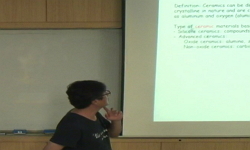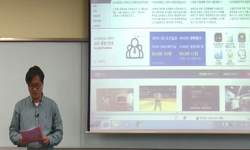본 연구는 오존 기반의 혼성 공정 (오존/UV 및 오존/정밀여과막)의 수 처리 적용 및 산화/소독 평가에 중점을 두었다. 오존과 UV를 조합하는 가장 중요한 목적은 거의 모든 유해물질과 비선택...
http://chineseinput.net/에서 pinyin(병음)방식으로 중국어를 변환할 수 있습니다.
변환된 중국어를 복사하여 사용하시면 됩니다.
- 中文 을 입력하시려면 zhongwen을 입력하시고 space를누르시면됩니다.
- 北京 을 입력하시려면 beijing을 입력하시고 space를 누르시면 됩니다.
Evaluation of the ozone-based hybrid processes combining with UV or membrane for water treatment
한글로보기https://www.riss.kr/link?id=T11392944
- 저자
-
발행사항
Wonju : Graduate School, Yonsei University, 2007
-
학위논문사항
학위논문(박사) -- Graduate School, Yonsei University , Dept. of Environmental Enginnering , 2007.2
-
발행연도
2007
-
작성언어
영어
-
주제어
오존 ; 정밀여과막 ; 혼성 ; 산화 ; 소독 ; OH 라디칼 (·OH) ; 내분비계 장애 ; 막오염 ; ozone ; microfiltration ; UV ; hybrid ; oxidation ; disinfection ; OH radical (·OH) ; estrogenic activity ; fouling
-
발행국(도시)
강원특별자치도
-
형태사항
xiv, 224장 : 삽도 ; 26 cm
-
일반주기명
지도교수: Joon-Wun Kang
- 소장기관
-
0
상세조회 -
0
다운로드
부가정보
국문 초록 (Abstract)
본 연구는 오존 기반의 혼성 공정 (오존/UV 및 오존/정밀여과막)의 수 처리 적용 및 산화/소독 평가에 중점을 두었다. 오존과 UV를 조합하는 가장 중요한 목적은 거의 모든 유해물질과 비선택적으로 반응하는 OH 라디칼(•OH)의 생성을 극대화하는 것이다. 오존/UV 공정에서 과산화수소는 오존의 광분해로 생성되며 OH를 생성시키기 위한 중간자 역할을 하기 때문에, 과산화수소의 분석 및 경향에 대한 파악은 오존/UV 공정을 이해하기 위해 매우 중요하다. 따라서 본 연구에서는 오존/UV반응에서 과산화수소와 오존의 생성 및 분해에 대한 경향을 면밀하게 조사하였다. 또한 과산화수소와 오존의 잔류 농도를 예측하기 위한 kinetic 연구가 수행되었다. 그 성과로서, 오존 주입량과 UV 조사량에 대한 최적비가 ozone dose (moleL-1sec-1) : UV dose (einsteinL-1s-1) = 2로 결정되었다:. 또한 모델과 실험결과를 비교하면서 광-반응기의 물리적 인자인 UV강도와 유효조사거리를 계산할 수 있었다. 오존/UV 공정의 산화 효율을 평가하기 위하여 한강 상수원에서 가장 많이 검출된 물질 중 하나인 diethyl phthalate(DEP)를 대상물질로 선정하였다. 본 연구에서는 DEP의 제거 효율뿐만 아니라 내분비계 장애 정도 (Estrogenicity)를 동시에 평가하였다. 그 결과로서, 오존 및 UV 단독 공정에 비하여 오존/UV 공정은 DEP의 무기물화와 내분비계 장애 저감에서 매우 높은 효율을 나타냈다. 오존/UV 공정의 실제적인 적용을 평가하기 위하여 하수방류수의 재이용에 대한 실험이 수행되었으며, COD 와 TOC저감에 매우 높은 효율이 조사되었다. 소독의 경우, 높은 오존 소비 물질과 UV 흡수 물질이 존재 함에도 불구하고 오존/UV 공정에서 P.aeruginosa의 불활성화에서 오존과 UV 단독 공정 대비 향상 효율이 관찰되었다. 이러한 결과는 오존/UV 공정이 오존과 UV의 한계를 극복할 수 있음을 설명하였다.오존과 정밀여과막 혼성 공정에서는 오존의 3가지 중요 역할 1) 정밀여과 공정 이전에 오존에 의한 막오염 유발물질의 제거, 2) 오염된 막의 오존 세정, 3) 정밀여과막에 의해 제거되지 못하고 투과하는 오염물질의 처리에 대하여 조사하였다. 본 연구에서는 제약물질(Pharmaceuticals)과 MS2 박테리오파지(MS2)를 모델 막오염물질 (foulants) 및 오존/정밀여과막 혼성공정의 산화/소독 성능 평가를 위한 대상 물질로 사용하였다. 본 실험에 앞서 각 foulant의 여과 시간에 따른 TMP(Transmembrane pressure) 증가 경향 관찰을 통해 막 오염 정도를 평가하였다. 막 오염 기작을 알아보기 위하여 기본 막 오염 모델을 적용한 결과, 제약물질은 흡착(adsorption), MS2의 경우는 내부 공극 막힘(internal pore plugging)으로 판단되었다. 또한 두 foulant들에 의한 막오염은 물리적 세정에 의해 제거 되지 않는 비가역적 오염임을 알 수 있었다. 전오존-정밀여과막 혼성 공정 실험에서는, 제약물질의 전오존처리는 TMP증가 속도를 효과적으로 저감시켰지만, MS2의 전오존 처리의 경우 오히려 오존처리를 하지 않았을 때 보다 TMP를 증가시킴을 알 수 있었다. 오존에 의한 막의 세정 효과를 관찰하였다. 각 foulant에 의해 오염된 막을 오존 용액에 세정한 이후 막 저항을 측정한 결과, 초기 오염되지 않은 막과 유사한 저항 값으로 회복하는 것을 관찰할 수 있었다. 정밀여과막-후오존 공정 실험의 경우, 막여과 이후 오존 처리에서 여과하지 않은 원수에 비하여 낮은 오존 분해속도와 낮은 유기물 (Ibuprofen 및 p-Chlorobenzoic acid) 제거 효율이 나타났다. 이러한 결과를 고려하였을 때, 정밀여과막 이후의 오존 공정은 소독적인 측면에서는 유리하나 산화의 목적에는 불리하다는 것을 알 수 있었으며, 유기물 산화와 막오염 제어를 위해서는 전오존-정밀여과막 혼성 공정의 사용이 제안될 수 있었다.
다국어 초록 (Multilingual Abstract)
This thesis focused on investigating the performance of two ozone-based hybrid processes (ozone/UV and ozone/microfiltration) for the oxidation and disinfection in water. The main purpose of combining ozone and UV was to maximize the formation of hydr...
This thesis focused on investigating the performance of two ozone-based hybrid processes (ozone/UV and ozone/microfiltration) for the oxidation and disinfection in water. The main purpose of combining ozone and UV was to maximize the formation of hydroxyl radicals (•OH), which can non-selectively react with almost all kinds of harmful compounds. In the ozone/UV process, hydrogen peroxide is formed by ozone photolysis, and then acts as an intermediate progressing toward •OH production. This study investigated the patterns of hydrogen peroxide, along with ozone, during the ozone/UV process. Thereafter, a kinetic study was performed to predict the residual concentrations of both ozone and hydrogen peroxide. As outcomes of this study, it was found that the optimum molar ratio of ozone dose (moleL-1sec-1):UV dose (einsteinL-1s-1) was about 2. Moreover, the physical parameters of the photo-reactor, such as UV intensity and effective light path, could be calculated using the model prediction. In order to test the oxidative ability of the ozone/UV process, diethyl phthalate (DEP), one of the most detected micropollutants in the Han River, was used as a target probe. This study investigated the removal efficiency and estrogenicity of DEP. The ozone/UV process showed much higher efficiency for the mineralization of DEP, while minimizing its estrogenicity, than those of the ozone alone and UV alone processes. For practical use of the ozone/UV process, it was applied to the reuse of sewage effluent water (SEW), resulting in good removal efficiencies of both COD and TOC. For disinfection, even though the ozone demand and presence of UV absorbing matters were high in the SEW, the ozone/UV process revealed a synergistic efficiency for inactivating P.aeruginosa. This result indicates that the ozone/UV process can overcome the limitation of the ozone alone and UV alone processes.In the ozone and microfiltration hybrid process, the role of ozone was explored with respect to three main criteria: 1) the use of ozone to reduce the foulants prior to the microfiltration, 2) the use of ozone to clean the fouled membrane, and 3) to eliminate the pollutants that are not rejected by the microfiltration. In this study, pharmaceuticals and MS2 bacteriophage (MS2) were used as two different types of model foulant and for target probes to test the performance of the ozone and MF hybrid process. Initially, the fouling trends of two model foulants were investigated by measuring the increase in the patterns of the transmembrane pressure (TMP). The extent of fouling in the tested MF process was adequately predicted by the adsorptive fouling and internal pore plugging models for pharmaceuticals and MS2, respectively, compared to other classical fouling models. The contribution to fouling by both foulants was found to be almost irreversible. In the preozone-MF hybrid scheme, the preozonation of pharmaceuticals could substantially suppress the rate of TMP increase, but the filtration of the ozonated MS2 caused a higher rate of TMP increase than the original MS2. The ozone cleaning method was found to be effective for cleaning the membrane contaminated by both foulants. When the fouled membranes were directly exposed to the ozone solution, the irreversible resistance, which cannot be removed by any physical cleaning method, was found to be effectively reduced; thereby, lowering the total resistance to close to that of the inherent resistance level. In the MF-preozone hybrid scheme, a slower ozone decay rate, which is a favorable condition from a disinfection perspective, but a lower IB removal rate, which is negative from an oxidative standpoint, was observed during ozonation following the MF process.












